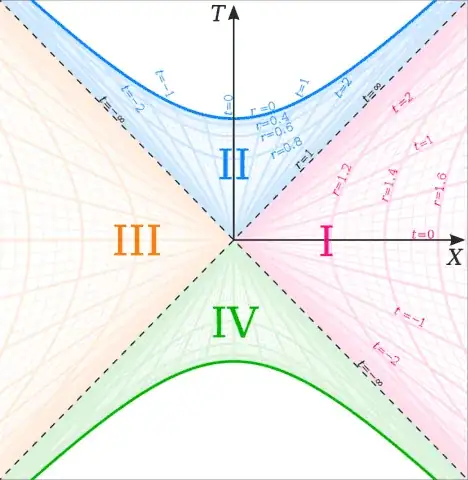I find that the most intuitive approach to a wide variety of questions in this vein is to invoke the Kruskal description and realize that the dynamics at the event Horizon, locally, are identical to those in special relativity at any lightlike surface. That is, if one zooms in on the diagonal line of the event horizon at the point of crossing, then you may as well be looking at the same diagram in 2d SR. This is the sense in which crossing the event horizon is "nothing special". Light cannot escape the event horizon in exactly the same way that two light rays going in the same direction (being parallel lines) cannot cross in SR. Notice that it is the case for any lightlike surface in SR (i.e. a 45 degree line in some inertial coordinate system) that, once one crosses it, they will never be able to do so again: this property of an event horizon, then, is not nearly as unique or mysterious a thing as it is often presented to be. Taking this approach allows us to ground the problem in our everyday experience without needing to imagine that these are exotic phenomena.
So, what happens when an extended object crosses a lightlike surface in SR? Of course, we ourselves are doing this constantly and continuously (as spacetime is foliated by lightlike surfaces), and it doesn't seem to impose any constraint on the ability of our brain to transmit signals to the rest of our body or our light switches to turn on lights across the room. The resolution is as pointed out in other answers: if our brain emits a signal to wiggle our toe at an instant (according to some fixed inertial observer: remember that simultaneity isn't meaningful in relativity) when our extremities are on opposite sides of some lightlike surface, it is simply that by the time our toe receives the signal, it must have crossed to the other side of the surface as well.
Could we concoct a scenario in which our toe never crosses the surface, and so cannot receive the signal to wiggle? In principle, yes, provided we have infinite energy at our disposal. Doing so requires that we accelerate asymptotically to the speed of light sufficiently quickly. As one does this, I expect that David is correct that we would necessarily be torn apart, as eventually the force carriers could only transmit one direction (from toe to head, but not head to toe). This does not occur simply by virtue of crossing the lightlike surface / event horizon, though-- it occurs when we attempt to accelerate to the speed of light so as to straddle the surface / horizon indefinitely.
